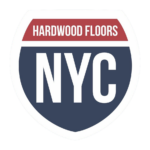Wood floors should last a lifetime with proper care, but many homeowners are confused when it comes to cleaning their floors.
- Which products should I use?
- Which products should I avoid?
- How do I clean my floor without damaging it?
- How often does my floor need to be cleaned?
There are many products you can find at big box and supermarket stores that promise a clean floor but can leave a hazy residue over time and prevent you from being able to refinish them someday.Other products are too harsh to use on wood surfaces and can damage the finish.Nobody wants to walk on dirty, sticky or hazy wood floors!We’ve put together a straightforward guide to cleaning your wood floors the right way so you can rest assured that your home is clean and your wood floors are protected.

What you should use to clean your wood floors
- Microfiber dusting pad
- Vacuum or broom
- Microfiber cleaning pad.
- Hardwood safe cleaning solution
What’s the difference between a microfiber dusting and cleaning pad?A dusting pad is designed to be used dry and swept across the floor to collect loose dirt, hair, crumbs, and other debris. Getting this stuff off your floor will make mopping much more effective.A microfiber cleaning pad should be used with a hardwood floor cleaning solution that is sprayed lightly across the floor and mopped with the cleaning pad.
How to clean your wood floors
- Remove dust and debris with the dry microfiber dusting pad, vacuum or broom.
- Clean tough spots with a damp rag by hand.
- Spray the cleaning solution across the area you are about to clean.
- Mop with the microfiber cleaning pad (rinse and clean or swap out to a clean pad if it’s a large area you are cleaning).
- Rinse the cleaning pad with warm soapy water or throw it in the washing machine.
These simple steps are easy to do and will keep your floor looking great.
When you should clean your wood floors
Always
- Wipe up spills right away with a rag or paper towels.
Daily
- Dry mopping, sweeping or vacuuming can be done daily as needed.
- High traffic areas usually need to be swept every day.
- Low traffic areas can be less frequent.
- Your main goal is removing dirt and debris that could damage your floor, or be hard to clean-up later.
Weekly
- Spray and mop once per week, or more as needed.
- Kitchens, hallways, entryways and living areas need the most attention.
- Stains and grime will get harder to clean the longer you wait.
- Always use a wood floor safe cleaner
Things to avoid when cleaning your wood floors
- Wet mops. They generally put too much water on your floors, which takes too long to evaporate. Water and wood don’t mix so avoid wet mopping with straight water.
- Steam mops. Steam mops will certainly get your floor clean, but the heat and high moisture will damage your floors over time. Most flooring manufacturers tell you that these will void the finish warranty on your floors!
- Supermarket oil soaps, waxes, or polishes. These wood floor oil soaps often say they are safe for wood and promise a shiny floor, but over time will leave a hazy residue. The buildup from these products can cause major problems if you ever want to refinish your wood floors. Avoid them for sure!
- Straight or diluted ammonia or alkaline products. Ammonia is too harsh for wood floors – even if it’s been diluted – and is likely to damage the finish or cause it to appear dull over time.
Products we recommend to clean your wood floors
From Real Wood Floors
Real Clean Floors has a cleaning solution that might be the very best on the market. It smells great, is naturally derived, and doesn’t leave any hazy residue. It really is amazing! Order from RealCleanFloors.co or on Amazon.com

Bona Cleaning Products
Bona is a well-known brand in the floor care market. They make a large variety of kits, mops, and wood floor safe cleaning solutions to keep your wood floors looking marvelous. You can purchase at Bona’s website, or on Amazon.com


